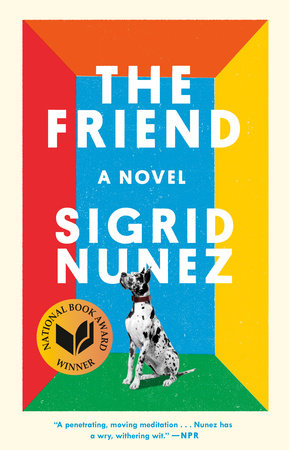In my novel Walking on the Ceiling, the narrator Nunu says that her friendship with the writer M. was the type of friendship she might have imagined when she was younger. In their detachment from the real world, Nunu and M.’s e-mail exchanges and walks certainly resemble the friendships of children: they make lists of things they love (from the colors of bird eggs, to dishes served in Istanbul’s fish restaurants); make up nicknames for waiters; repeatedly walk the city’s most beautiful streets; have picnics on the river. They don’t discuss topics that weigh on them or ask each other personal questions. Their time together is at once a consolation and an escape; a space where they can live in their imagination.
It’s no wonder that children’s books are often about friendships and the adventures that ensue. In that early time of creativity and curiosity, friends define our sense of self by mirroring us, becoming our doubles, and expanding the borders of our imagination. But novels for adults about friendship are surprisingly rare, compared to those that center on romance, family, or solitude. And yet, friendship is all these things—an in-between state that is at once intimate and reserved.
Here are 7 eccentric friendships in literature.

The Friend by Sigrid Nunez
Sigrid Nunez’s The Friend, explores this shifting territory through a writer’s bond with a Great Dane she’s inherited from her deceased friend: the woman and the dog know nothing about one another but can also sense each other’s subtlest moods. Behind this relationship looms the memory of the deceased friend. Like the dog, the friend is in many ways a stranger to the narrator as well as the closest person she had in life.

Strange Weather in Tokyo by Hiromi Kawakami
In Hiromi Kawakami’s Strange Weather in Tokyo, Tsukiko runs into her former high school teacher “Sensei” one night at a Tokyo bar. Their friendship continues over many late-night dishes at Izakaya joints, baseball games, and mushrooms hunts. It’s not always clear why Tsukiko continues to spend time with the recalcitrant Sensei who is thirty years her senior. But her unarticulated tagging along becomes a moving character study and the backbone of the novel’s subtle tension.

A Useless Man by Sait Faik Abasiyanik
In the slippery, deceptively simple stories of Sait Faik, the narrator’s imaginary friend Panco takes on many forms, from friendly to evil. Panco is sometimes a voice, sometimes fully grounded in the world. In one story, he “lives on a street named Strawberry. In his dreams, he sees football games.” In another, the dreaming Panco comes back to menace the narrator’s. “I felt as lonely as I always did when he was with me.”

Molly Fox’s Birthday by Deirdre Madden
The multiple roles assumed by friends is exquisitely depicted in Deirdre Madden’s Molly Fox’s Birthday, about the friendship between a playwright and an actress. The narrator is spending the weekend at her best friend Molly’s house in Dublin, hoping to start writing a new play. Molly, an actress, is away but her character unfolds through the descriptions of her possessions, as the narrator moves from room to room, unable to sit down to work. Molly’s house becomes the stage, and the reminiscence of their friendship the play’s invisible acts.

The Summer Book by Tove Jansson
Tove Jansson’s The Summer Book is about an old woman and a young child spending a summer on a small island. They fight and curse, break into strangers’ homes, build a model of Venice, and care for each other tenderly. Their friendship is all the more touching in their effort to pretend indifference. Even though the old woman is the child’s grandmother, their relationship is that of fully autonomous individuals, slyly curious about one another but always on guard.

Mrs. Palfrey at the Claremont by Elizabeth Taylor
Elizabeth Taylor’s Mrs. Palfrey at the Claremont is another book about the friendship between old and young. A young writer visits the elderly Mrs. Palfrey at the Claremont Hotel, full of nosy residents, pretending to be her grandson. That the quirky relationship never becomes sentimental is because of the bitter limits of the characters’ emotional capacities and their expectations from one another. Nor does the characters’ selfishness become so rigid as to hinder real connection in Taylor’s swift, graceful prose.

The Epic of Gilgamesh
The earliest surviving work of literature, The Epic of Gilgamesh, is also a story of best friends. Gilgamesh, a cruel king, is sent Enkidu by the gods to keep him in check. Enkidu is Gilgamesh’s match in magnificence, though he is wild where Gilgamesh is civilized; wise where Gilgamesh is reckless. Gilgamesh is devastated by Enkidu’s death and travels to the edge of the world to learn the secret of immortality. From his journey, he brings back the story of the great flood, which will later resurface in the Biblical story of Noah. It’s a strange and wonderful fact that the Western foundational myth is attained with the loss of a best friend. (And Herbert Mason’s verse translation of the epic is a pleasure to read for the sake of its language alone.)
The post 7 Unlikeliest Friendships in Literature appeared first on Electric Literature.











